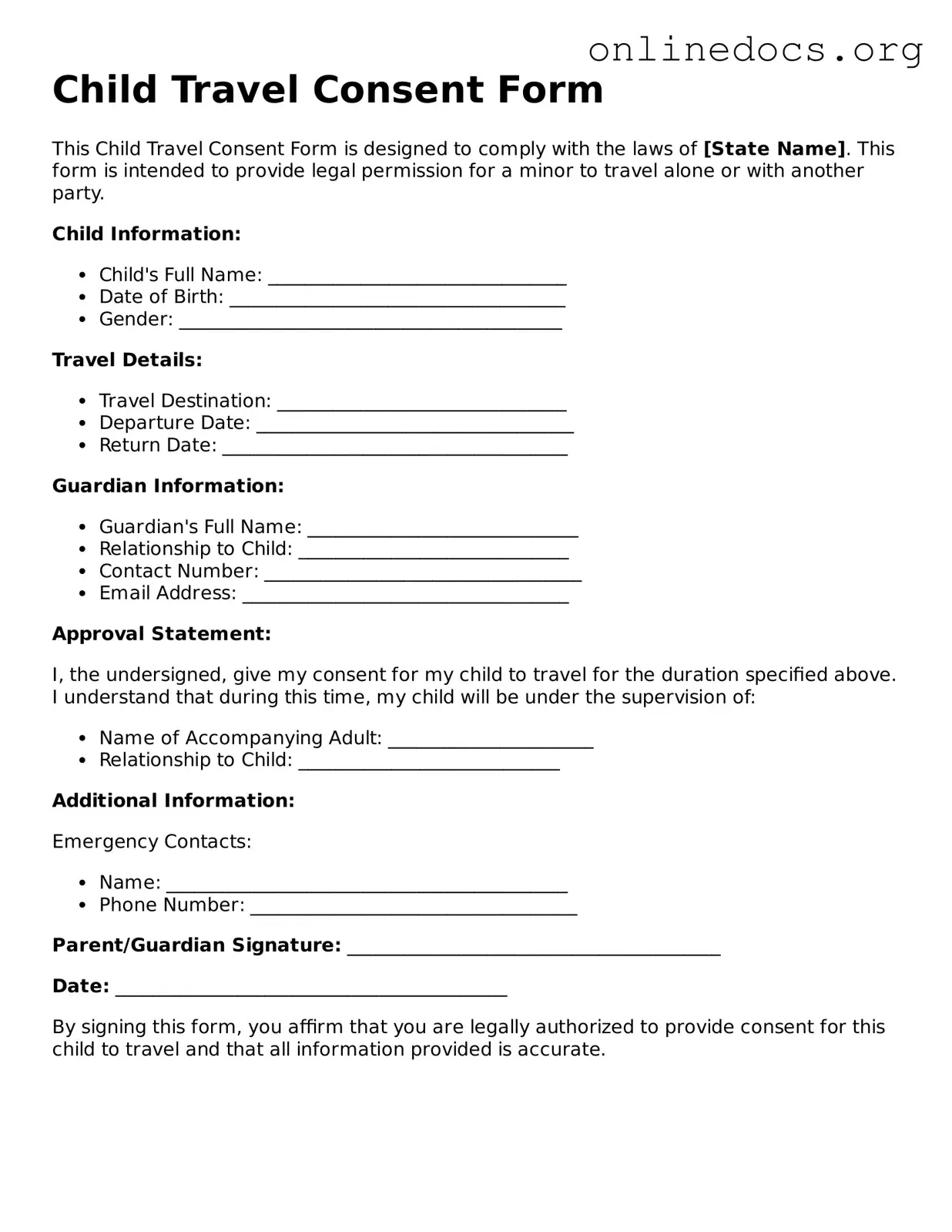The Child Travel Consent Form is similar to the Minor Consent Form, which grants permission for a minor to receive medical treatment. Both documents serve to protect the rights and well-being of minors. In the case of the Minor Consent Form, parents or guardians must provide their approval for healthcare services, ensuring that medical professionals can act swiftly in emergencies. Just as the Child Travel Consent Form facilitates travel, the Minor Consent Form enables necessary medical interventions when a child is under someone else's care.
Another related document is the Power of Attorney for Minor Children. This form allows a parent or guardian to designate another adult to make decisions on behalf of their child. While the Child Travel Consent Form focuses specifically on travel, the Power of Attorney covers broader aspects of a child's welfare. Both documents empower designated individuals to act in the best interest of the child, ensuring that they are cared for in various situations.
The Temporary Guardianship Agreement also shares similarities with the Child Travel Consent Form. This agreement allows a parent to temporarily assign guardianship to another adult, often for a specific period or purpose. Like the travel consent form, it ensures that the child has an appointed adult responsible for their care. Both documents help clarify responsibilities and provide peace of mind for parents when they are unable to be present.
The Affidavit of Consent is another document that parallels the Child Travel Consent Form. This affidavit is often used in custody situations to confirm that a parent agrees to allow their child to travel with another adult. Similar to the travel consent form, it requires signatures from both parents or legal guardians, ensuring that all parties are informed and in agreement about the child's travel plans.
The Child Medical Consent Form is also akin to the Child Travel Consent Form. This document allows a designated adult to make medical decisions for a child in the absence of the parent or guardian. Both forms aim to protect the child's interests while they are under someone else's supervision. They ensure that caregivers have the authority to act in emergencies, whether that involves travel or medical situations.
The Travel Consent for Minors is another document that aligns closely with the Child Travel Consent Form. This specific form is often used by airlines and travel companies to verify that a minor has permission to travel without their parents. Like the Child Travel Consent Form, it requires signatures from parents or guardians, confirming that they are aware of and approve the travel arrangements.
The Consent to Travel Form is similar in function to the Child Travel Consent Form, as it also provides authorization for a child to travel. This document is often required by airlines, hotels, and other travel-related entities. It ensures that all parties involved understand the travel plans and have the necessary permissions, just as the Child Travel Consent Form does.
The Travel Authorization for Minor Children is another document that serves a similar purpose. This authorization is typically required for international travel, ensuring that a child has permission from their parents or guardians to leave the country. Like the Child Travel Consent Form, it helps prevent potential legal issues and confirms that the child's travel is authorized and safe.
Lastly, the School Field Trip Permission Slip can be compared to the Child Travel Consent Form. While it is specific to school activities, this slip allows parents to grant permission for their child to participate in off-campus events. Both documents emphasize parental consent and ensure that the child is under appropriate supervision during their activities, whether traveling for leisure or educational purposes.
